Your Trusted Wholesale And Custom Burlap Fabric Manufacturer
Szoneier Fabric Masters the Art of Natural, Customizable Burlap Solutions
As a trusted burlap fabric manufacturer, Szoneier Fabric harnesses the raw versatility of jute and sisal fibers to deliver eco-friendly, durable materials tailored to your needs. Burlap’s innate strength, breathability, and rustic charm make it ideal for agriculture, packaging, crafts, and sustainable design—all while aligning with environmentally conscious practices.
Your Vision, Woven into Reality:
From weight and weave density to dyed colors, coatings (water-resistant, fire-retardant), or branded prints, we customize burlap to match your exact specifications. Whether for bulk agricultural sacks, chic home décor, or branded retail packaging, we transform this humble natural fiber into high-value solutions.
Why Choose Szoneier for Burlap?
Low MOQ & Fast Turnarounds – Perfect for startups and global brands alike.
Free Design Support & Sampling – Test before you commit.
Adaptable Performance – Add reinforcements or treatments for specialized use.
Sustainable by Nature. Perfected by Szoneier.
Just Try Us!
You just choose wholesale any burlap fabric types for your customization, and we will take care of the rest.
Selecting the perfect fabric for your product line has never been easier! As a top rated fabric manufacturer, we offer a wide variety of wholesale Cotton fabrics that can be customized to suit your exact needs. Whether you’re looking for lightweight cotton for clothing, durable options for bags, or specialized fabrics with water-resistant or UV-protective coatings, we’ve got you covered. With endless options in colors, textures, and finishes, our fabrics are perfect for fashion, home textiles, outdoor gear, and more. Partner with us to bring your ideas to life with high-quality materials, competitive prices, and flexible customization options.

black burlap fabric

burlap landscape fabric

burlap mesh fabric

Decor Lace burlap fabric

decorative burlap fabric

embroidered burlap Fabric

Gardening Burlap Fabric

jute burlap fabric

Jute Fabric Colored Burlap Fabric

Natural Jute Burlap Fabric for Bags

poly burlap mesh

Poly Linen Burlap fabric

Polyester Burlap Jute Fabric

printed burlap fabric

Raw Material Burlap Fabric

Simulation Burlap Rolls Linen fabric

Square Sheet burlap fabric
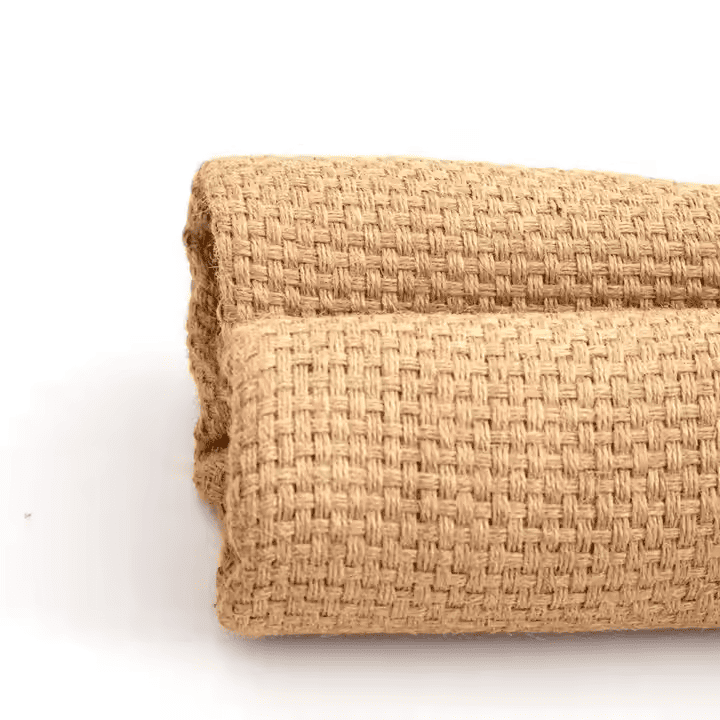
Table Runner Burlap Fabric

Tape Jute Burlap Hessian Fabric

Textile burlap fabric
Wholesale and Custom Fabric Categories
Burlap fabric, known as hessian fabric, is a coarse, woven material made from natural fibers, typically jute or sisal. It has a rough, textured surface and is known for its durability, breathability, and eco-friendly properties.
Potential applications of burlap fabric











Bags and Accessories
Burlap fabric is an excellent choice for crafting durable and stylish bags and accessories. Its natural jute fibers provide exceptional strength while maintaining a lightweight feel, making it ideal for tote bags, backpacks, beach bags, and storage sacks. The rustic, earthy texture adds a unique aesthetic appeal, perfect for those who appreciate eco-friendly fashion. Burlap bags are not only resilient and tear-resistant but also breathable, helping to keep contents fresh. Whether used for casual outings, shopping trips, or outdoor adventures, these bags offer a practical and sustainable solution. Embrace the charm of burlap while making a conscious choice for the environment—functional, fashionable, and timeless.

Packaging
Burlap fabric is an ideal choice for packaging and logistics, thanks to its exceptional durability and natural breathability. Made from strong jute fibers, burlap bags can withstand heavy loads, making them perfect for transporting bulk goods like coffee beans, potatoes, grains, and sand. The coarse weave allows for proper airflow, preventing moisture buildup and reducing the risk of mold and spoilage during transit. Additionally, burlap's resistance to tearing ensures that products remain securely contained, even under rugged handling. Its eco-friendly and biodegradable properties make it a sustainable alternative to synthetic packaging materials. Beyond practicality, the rustic, natural appearance of burlap adds a unique touch to product presentation, reinforcing a commitment to sustainability. For reliable, environmentally conscious packaging solutions, burlap fabric stands out as a top choice in the logistics industry.

Weddings and Event Décor)
Burlap fabric adds a touch of rustic elegance to weddings and special events, creating a warm and inviting atmosphere. Its natural, earthy tones and coarse texture make it an ideal choice for table runners, chair sashes, and backdrop drapes, seamlessly blending with floral arrangements and lace accents. Burlap is not only visually appealing but also highly versatile—it can be used to craft handmade banners, favor bags, bouquet wraps, and even decorative bows. Whether you’re hosting a charming outdoor ceremony or a vintage-inspired indoor celebration, burlap brings a timeless, handcrafted feel to any setting. Its durable nature ensures it withstands the hustle and bustle of events while maintaining its authentic charm. For couples and event planners seeking eco-friendly and affordable décor options, burlap fabric delivers a perfect balance of practicality and style, making every occasion truly unforgettable.
Why Partner With Your Trusted burlap Fabric Manufacturer For Your Bespoke Products Needs?
Why Partner With Szoneier – Your Trusted Burlap Fabric Manufacturer?
At Szoneier Fabric, we don’t just supply burlap—we engineer natural, high-performance solutions tailored to your brand’s unique demands. Here’s why global clients rely on us for their bespoke burlap needs:
Unmatched Expertise in Natural Fibers
With decades of experience in jute and sisal weaving, we master burlap’s rustic integrity while enhancing it for modern applications—from reinforced agricultural sacks to luxury eco-packaging. End-to-End Customization . Sustainable Without Compromise As stewards of eco-friendly production, our burlap is 100% biodegradable, OEKO-TEX® compliant (optional), and sourced through responsible practices—aligning with global sustainability goals.
Agile Support for Every Business Scale
Low MOQs Ideal for startups and small batches. Free Samples & Design Assistance – Perfect your prototype risk-free. Fast Lead Times – From sampling to bulk delivery, we prioritize your timeline. Trusted by Global Brands , We’ve helped agricultural suppliers, luxury retailers, and craft manufacturers transform burlap into branded, functional, and planet-friendly products.
Let’s Weave Your Ideas Into Reality.
Contact Us for a free consultation or sample request today!
Fabric Dyeing And Finishing Process
The fabric dyeing and finishing process is a crucial phase in textile manufacturing, transforming raw materials into vibrant, functional textiles. This process not only enhances the aesthetic appeal of the fabric but also improves its durability and usability
Dyeing
Dyeing is the process of adding color to fabric. Different dyeing techniques can be used depending on the type of fabric and the desired outcome: Fiber Dyeing: Color is applied directly to the fibers before they are spun into yarn. This method is often used for wool and silk and allows for rich, deep colors. Yarn Dyeing: The yarn is dyed before weaving into fabric. This technique is ideal for patterns like stripes or plaids and is commonly used for cotton fabrics. Piece Dyeing: In this method, the fabric is dyed after it has been woven. It is the most common method used for bulk production of colored fabrics. Batch Dyeing: Fabric is dyed in large batches, ensuring consistency in color across large quantities.
Printing
Printing adds intricate designs to fabric using various methods. The most common printing techniques include: Screen Printing: A stencil is created for each color, and dye is pushed through a mesh screen onto the fabric. This method is ideal for bold, vivid designs and is widely used for T-shirts and home textiles. Digital Printing: This modern technique uses inkjet technology to print designs directly onto fabric. It allows for high detail and quick turnaround times, making it perfect for custom designs. Rotary Screen Printing: Similar to screen printing but uses a cylindrical screen for continuous printing, making it efficient for large runs.
Coating
Coating involves applying a layer of material to the fabric to enhance its properties. This can include: Waterproofing: Fabrics are coated with a water-repellent finish to protect against moisture. This is commonly used for outdoor gear and clothing. Flame Resistance: Fabrics can be coated with fire-retardant chemicals to meet safety standards for specific applications, such as upholstery and workwear. Stain Resistance: A coating can be applied to fabrics to prevent stains from setting in, making them easier to clean and maintain.
Color Weaving
Color weaving involves incorporating colored yarns into the fabric during the weaving process. This method allows for intricate patterns and designs, such as:Jacquard Weaving: Developed in the 19th century, this advanced technique employs computerized looms to independently control thousands of warp threads, enabling photorealistic imagery and elaborate motifs. Modern applications range from luxury tapestries to technical textiles with embedded smart patterns, particularly valued in high-end upholstery and narrative-driven fabric art. Twill Weave: Characterized by its signature diagonal ribbing, this method interlaces colored weft threads in staggered sequences that enhance structural integrity. The angled texture not only camouflages stains but also improves abrasion resistance, making it ideal for durable workwear, designer denim, and performance-oriented home textiles like decorative pillow covers.
Fabric Structure Types
If you need help choosing the right fabric structure for your project, feel free to reach out to our expert team for guidance!
The plain neoprene structure is the most basic and widely used form of neoprene, where the material is typically formed without any distinct texture or pattern. This simple design offers excellent flexibility, insulation, and durability. Plain neoprene is often used in wetsuits, dive suits, and protective gear due to its ability to provide thermal insulation and flexibility. The smooth surface allows for easy movement and a comfortable fit, making it suitable for water sports and outdoor activities.
1. Plain Neoprene
Open-cell neoprene features a structure where the cells within the material are interconnected, allowing air and water to pass through. This makes the fabric more breathable and flexible but less insulated compared to closed-cell options. Open-cell neoprene is commonly used in dive gear, thermal insulation for clothing, and sports braces where breathability is important. It is also often used in impact-resistant padding because of its cushioning properties.
2. Open-Cell Neoprene
In closed-cell neoprene, the material consists of cells that are not interconnected, providing a better barrier to air and water. This structure enhances insulation and buoyancy, making it ideal for wetsuits, diving suits, fishing waders, and thermal clothing used in cold-water conditions. The closed-cell structure helps keep the body warm by trapping air within the material and preventing water absorption, making it suitable for cold-water environments.
3. Closed-Cell Neoprene
Foam-filled neoprene is a variation where a layer of foam is inserted between the neoprene layers. This provides enhanced insulation and cushioning properties. Foam-filled neoprene is often used in protective gear, sports pads, and insulated clothing, offering additional shock absorption and comfort. The foam layer also improves the flexibility of the material, making it ideal for activities like kayaking, surfing, or any sport requiring impact protection.
4. Foam-Filled Neoprene
Textured neoprene features a surface with added patterns or embossing, giving it a more aesthetic and functional design. The texture can enhance grip, durability, and comfort, making it useful in sports gloves, protective knee pads, and equipment covers. The added texture also allows for better aeration, making it more comfortable for extended wear, especially in protective gear or sports apparel.
5. Textured Neoprene
Fabric Weaving Process
01
Single-Sided Fabrics
Single-sided fabrics are produced using a straight forward weaving technique where the design and texture are visible on only one side of the fabric. The reverse side often has a plain, untextured appearance. This type of fabric is commonly used in garments, linings, and home textiles, where only one side is intended to be seen. The benefits of single-sided fabrics include simplicity in design and cost-effectiveness in production. Examples include satin, which features a glossy surface on one side, and muslin, known for its lightweight and breathable qualities.
02
Knitted Fabrics
Knitted fabrics are created by interlocking loops of yarn, resulting in a flexible and stretchy material. This process allows for a variety of textures and patterns, making knitted fabrics popular in apparel, activewear, and home textiles. Knitting can be performed using different techniques, such as warp knitting and weft knitting. Warp knitting involves yarns running parallel to the fabric’s length, providing greater stability, while weft knitting has yarns woven horizontally, offering more stretch. The unique properties of knitted fabrics, such as breathability and comfort, make them ideal for casual wear and sportswear.
03
Double-Sided Fabrics
Double-sided fabrics, also known as reversible fabrics, are woven to have distinct designs or textures on both sides. This type of fabric is produced by interlacing two layers of yarn, creating a thicker and more substantial textile. Double-sided fabrics are highly versatile and can be used in a variety of applications, from fashion to upholstery. The ability to use either side of the fabric adds value and functionality, allowing designers to create reversible garments and accessories. Common examples include double-faced wool, often used in coats, and plush velvet, popular in home furnishings.
04
Weft Knitting
Weft knitting is a specific type of knitting technique where the yarn is fed horizontally across the fabric. This process creates a series of interlocking loops, resulting in a stretchy and comfortable fabric. Weft knitted fabrics are widely used in garments such as T-shirts, sweaters, and leggings due to their excellent elasticity and ability to conform to the body. Additionally, weft knitting allows for a wide range of stitch patterns, offering designers creative flexibility in their projects. The softness and drape of weft knitted fabrics make them a favorite choice in casual and activewear.
Fabric Type
Burlap fabric, known for its durability and rustic charm, is a versatile material used in home decor, crafts, and industrial applications. From classic plain burlap to finely woven and laminated varieties, it offers endless possibilities. Whether for eco-friendly bags, wedding decorations, or agricultural use, burlap’s natural texture and breathability make it a timeless choice. Explore our diverse burlap fabric collection to find the perfect match for your creative and functional ne
Ordinary linen
- traditional jute weaving, rough texture, suitable for decoration, packaging, agricultural purposes.
Fine linen
- finer and softer fibers, often used for home decoration, crafts, clothing.
Coated linen
- with plastic or waterproof coating on the back to enhance durability, suitable for bags, protective covers, etc.
Colored linen
- after dyeing process, suitable for wedding decoration, DIY handicrafts.
Fireproof linen
- after special treatment, with flame retardant function, often used for stage scenery, public place decoration.
Printed linen
- with patterns or brand logos printed on the surface, mostly used for gift packaging, craft design.
Organic linen
- using natural and environmentally friendly process, no chemical treatment, suitable for eco-friendly products.

Fabric Printing Styles
Fabric printing is an essential aspect of textile design, allowing for the creation of unique patterns and vibrant colors that enhance the aesthetic appeal of fabrics. Various printing styles cater to different tastes and applications, providing endless possibilities for customization. Let’s explore some of the most popular fabric printing styles:
1. Intricate Printing
2. Black and White Printing
3. Botanical Prints
4. Geometric Prints
5. Knitted Jacquard
6. Abstract Prints
Fabric Features
Burlap fabric, crafted from natural jute fibers, is known for its rustic charm and remarkable durability. Its coarse texture and earthy tones lend a vintage appeal, making it ideal for eco-friendly projects, home décor, and packaging solutions. With excellent breathability and moisture absorption, burlap effortlessly combines functionality with sustainability. Choose burlap for a timeless, natural look that stands the test of time.
Material and Source
Texture and Appearance
- The texture is rough, sturdy and durable, with natural earth color and rustic appearance, full of country style and retro atmosphere.
Breathability and Moisture Absorption
- Due to the characteristics of jute fibers, burlap has good breathability and moisture absorption, and can quickly absorb and release moisture.
Durability and Strength
- Burlap fabric fibers are tough, resistant to pulling and abrasion, and are suitable for heavy-duty packaging bags, gardening fabrics and home decoration.
Environmental Protection and Sustainability
- As a natural fiber, Burlap is completely biodegradable, reducing environmental pollution and is an eco-friendly choice.


Fabric Durability
Burlap fabric is renowned for its exceptional durability and strength, making it the perfect choice for heavy-duty applications. Its robust jute fibers resist tearing and abrasion, even under constant use. With impressive weather resistance, burlap maintains its integrity outdoors, enduring sun exposure and wear. Ideal for packaging, gardening, and décor, burlap is a reliable, reusable solution that stands the test of time. Choose burlap for unparalleled durability and sustainability.
- Strength and tensile properties: Burlap fabric is made of jute fiber, which has excellent strength and tensile properties and can withstand large tension and weight. This makes it perform well in heavy-duty packaging bags, geotextiles and agricultural fabrics.
- Wear and tear resistance: The rough fiber structure allows Burlap to remain intact under frequent use and friction, and it is not easy to tear or break, extending its service life.
- Weather resistance: Burlap has a certain degree of weather resistance, can resist sunlight and natural wear, and can maintain a stable structure and form even when used outdoors.
- Reusability and versatility: Due to its sturdy characteristics, Burlap products can be used repeatedly and are suitable for packaging, agriculture, gardening, home decoration and other fields, with high economic benefits.
Factory Direct Wholesale Stock Cotton Fabric Styles
High-quality source manufacturers, providing bulk orders, spot and customized solutions for global retailers. Guaranteed fast delivery.

Burlap Roll NO-FRAY Fabric

Elegant Classic Burlap Fabric

Hemp Burlap Fabric

Jute Burlap Fabric

Jute Fabrics Burlap Fabric

Jute Ribbon Burlap Fabric

Knitted Burlap Fabric

Linen Burlap Sofa Fabric

o-friendly Woven Jute burlap Fabric

Patterned Cotton Linen Burlap Fabric

Picnic Splicing Burlap Fabric

Plain Color Printed Burlap Fabric

Printed Jute Fabric Burlap

Ribbon Jute Burlap Hemp Rope Webbing

Waterproof Lamination Jute BurlapFabric
Fabric Post Treatment Processes
Fabric finishing processes play a vital role in enhancing the quality and performance of our polyester fabrics. At the Szoneier mill, we use advanced technologies to ensure that each fabric meets the highest standards of durability, softness and functionality. Our finishing processes include dyeing, finishing and coating methods that not only enhance color vividness and fade resistance, but also enhance properties such as water and stain resistance. Through the careful application of these processes, we ensure that our polyester fabrics are not only beautiful, but also meet the needs of a variety of applications. We have listed 50 processes to make them the perfect choice for your needs.
What is Pre-shrinking ?
Pre-shrinking is a process that uses physical methods to reduce the shrinkage of fabric after water immersion, thereby lowering the shrinkage rate. Mechanical pre-shrinking involves wetting the fabric with steam or mist, followed by mechanical squeezing in the warp direction, which increases the amplitude of buckling waves, and then subjecting it to relaxed drying.
What is Stretching ?
Stretching is a finishing process that utilizes the plasticity of fibers like cellulose, silk, and wool in humid conditions. By gradually expanding the fabric to a specified width, this method stabilizes its shape during drying. Known as dimensional finishing, it helps the fabric maintain its intended dimensions and improves its overall structure, reducing distortion during use.
What is Sizing ?
Sizing is a technique that involves applying a sizing solution to the fabric and subsequently drying it to enhance its stiffness and body. This process improves the fabric’s strength, making it easier to handle during manufacturing and providing a more substantial feel. Sizing also helps reduce fraying and ensures better dye absorption, resulting in improved color depth and uniformity.
What is Heat Setting ?
Heat setting is a finishing process that stabilizes thermoplastic fibers in synthetic materials like nylon and polyester, preventing shrinkage or deformation. By applying controlled heat and pressure, it maintains the fabric’s dimensions and enhances stability, improving durability and providing a firmer hand feel for better quality and performance in various applications.
What is Whitening ?
Whitening enhances the brightness and whiteness of textiles using complementary colors. Techniques include blue tinting, which adds a subtle blue hue to reduce yellowing, and fluorescent whitening, which uses optical brighteners to reflect more light. These methods improve the fabric’s appearance, making it look cleaner and more vibrant.
What is Calendering, Electric Calendering, and Embossing ?
Calendering is a process that flattens fabric surfaces and creates patterns using heat and humidity to enhance luster. Flat calendering employs hard and soft rollers for a smooth finish, while soft calendering uses two soft rollers for a gentler gloss. Electric calendering utilizes heated rollers, and embossing adds patterns with engraved steel rollers, resulting in a lustrous look.
What is Napping ?
Napping is a finishing process that employs abrasive rollers or belts to raise a layer of short, dense fibers on the fabric’s surface. This brushing technique produces a plush nap, enhancing both the warp and weft yarns. The result is a soft, textured fabric that feels warm and inviting, making it ideal for clothing, blankets, and upholstery while improving its aesthetic appeal.
What is Raising ?
Raising is the process of lifting fibers from the surface of the fabric using dense needles or pricking, creating a layer of pile, also known as pile raising. This technique is primarily applied to coarse wool fabrics, acrylic fabrics, and cotton fabrics. The resulting pile layer enhances the fabric’s warmth, improves appearance, and provides a soft hand feel.
What is Shearing ?
Shearing is a process that removes unwanted fuzz from the fabric surface using a shearing machine. Its purpose is to clarify the fabric weave, achieve a smooth surface, or ensure an even finish on raised or fuzzy fabrics. Common products requiring shearing include wool fabrics, velvet, faux fur, and carpets.
What is Softening ?
Softening can be achieved through mechanical or chemical means. Mechanical softening involves multiple rubbing and bending actions on the fabric, but the resulting softness may not be ideal. Chemical softening involves applying softening agents to the fabric, reducing the friction coefficient between fibers and yarns, resulting in a noticeably soft and smooth hand feel.
What is Stiffening ?
Stiffening is a process that involves coating the fabric with a sizing solution and drying it to achieve a thick and firm hand feel. This finishing method aims to improve the fabric’s hand feel by applying a solution made from natural or synthetic polymers with certain viscosity, forming a thin film on the fabric that imparts smoothness, firmness, thickness, and fullness, while also enhancing the fabric’s strength and abrasion resistance.
What is Liquid Ammonia Treatment ?
Liquid ammonia treatment involves processing cotton fabrics with liquid ammonia to eliminate internal stress within the fibers, improving their luster and wear performance, reducing shrinkage, and increasing resilience, tensile strength, and moisture absorption. The resulting hand feel is soft, elastic, and resistant to wrinkles, with stable dimensions.
What is Weighting ?
Weighting is a process primarily aimed at compensating for the weight loss of silk fabrics after degumming, using chemical methods to increase the weight of silk textiles. Common methods include tin weighting, tannin weighting (not suitable for white or light-colored silk fabrics), and resin weighting.
What is Lightening ?
Lightening is a finishing process that utilizes the hydrolysis of polyester in high-temperature and specific concentrations of sodium hydroxide solution to gradually dissolve the fibers, reducing the fabric’s weight (typically controlled at 20%-25%) and creating depressions on the surface that lead to diffuse light reflection, resulting in a soft sheen. At the same time, the gaps between fibers in the yarn are enlarged, creating a silk-like effect.
What is Boiling Wool ?
Boiling wool is a process that treats wool fabrics in a hot water bath under tension to flatten and stabilize them, reducing deformation during later wet processing. Primarily used for finishing worsted wool fabrics, it enhances dimensional stability and improves hand feel, preventing future wrinkling or deformation.
What is Steaming Wool ?
Steaming wool is a process that stabilizes wool fabrics through steaming under humid heat conditions, improving hand feel and luster. This technique is primarily used for wool fabrics and their blends, but can also be applied to silk and viscose fabrics. The resulting fabric is dimensionally stable, with a smooth surface and a natural sheen, as well as a soft and elastic hand feel.
What is Pressing Wool ?
Pressing wool uses mechanical pressure and humid heat to flatten the fabric, enhancing its luster and texture. Key techniques include rotary pressing, which employs steam and heated cylinders for a smooth finish (though the shine is temporary), and electric board pressing, which offers a soft sheen and crisp feel but requires bulky equipment, mainly for worsted wool fabrics.
What is Felted Wool ?
Felted wool is a process that uses the felting property of wool to create dense, thick wool fabrics and form a pile on the surface, also known as fulling. Felting improves the hand feel and appearance of the fabric while enhancing its thermal insulation. This process is especially suitable for coarse wool fabrics.
What is Anti-felting ?
Anti-felting is a finishing process aimed at preventing or reducing the shrinkage and deformation of wool fabrics during washing and wear, thereby ensuring dimensional stability in garments. This principle involves chemically treating the scales to alter their surface state or covering the surface with a polymer layer to bond fiber interlace points, effectively removing the basis for felting.
What is Wrinkle Resistance ?
Wrinkle resistance is a finishing process that modifies the original composition and structure of fibers, enhancing their resilience and making the fabric less prone to wrinkling during wear. This method is primarily used for pure or blended cellulose fibers and can also be applied to silk fabrics.
What is Crinkle Finish ?
Crinkle finish is a process that creates various irregular wrinkles on fabric. Techniques include mechanical pressing for an embossed appearance, such as hand crinkling and rope crinkling, as well as rubbing methods like liquid flow dyeing and tumbler drying. This finish is mainly applied to pure cotton, polyester/cotton blends, and polyester filament fabrics.
What is Water Repellent Finish ?
Water repellent finishing involves treating fibers with chemical water repellents to lower the surface tension, causing water droplets to not wet the surface. This process is also known as breathable waterproof finishing and is suitable for materials used in raincoats and travel bags. Based on the durability of the water repellent effect, it can be categorized as semi-durable or durable.
What is Oil Repellent Finish ?
Oil repellent finishing involves treating fabrics with oil-repellent agents to create a surface that repels oil. Fabrics that undergo oil repellent finishing are also water-repellent and possess good breathability. This technique is mainly applied to high-quality raincoats and specialized wear materials.
What is Antistatic Finish ?
Synthetic fiber fabrics can accumulate static electricity due to low moisture and high crystallinity. Antistatic finishing applies chemical agents to enhance hydrophilicity and reduce static by creating a conductive layer on hydrophobic surfaces for ionization. However, this method is generally less effective and durable than blending or interlacing conductive fibers during weaving.
What is Easy-Clean Finish ?
Easy-clean finishing simplifies dirt removal from fabric during standard washing while preventing re-accumulation. It enhances the fibers’ surface hydrophilicity, reducing surface tension between the fibers and water. When wet, the hydrophilic layer expands, creating mechanical forces that help detach dirt by applying a hydrophilic polymer layer to the fabric’s surface.
What is Mold and Mildew Resistant Finish ?
Mold and mildew resistant finishing typically involves applying chemical anti-mold agents to cellulose fiber fabrics to kill or inhibit microbial growth. To prevent textiles from molding during wet processing or in humid environments, common anti-mold agents include formaldehyde and 2-phenylphenol.
What is Flame Retardant Finish ?
Flame retardant finishing involves treating fabric surfaces with flame retardant agents to improve the fabric’s fire resistance. Common flame retardant agents include phosphoramide, ammonium phosphate, and polyvinyl chloride, all of which can reduce combustion rate and slow down flame spread.
What is Waterproof Finish ?
Waterproof finishing treats fabric surfaces with agents like fluorocarbon compounds, polyurethane, and silicone to block moisture while maintaining breathability. This finishing is applied to products such as rain gear, tents, and outdoor sportswear. Fluoropolymer coatings are commonly used, forming a barrier against water without compromising airflow.
What is Durable Press Finish ?
Durable press finishing involves applying resin finishing to cellulosic fiber fabrics to improve their crease resistance. The finishing is primarily applied to fabrics that require high durability, such as workwear and casual wear. The primary agent used in durable press finishing is DMDHEU (dimethylol
dihydroxyethyleneurea).
What is Stain-Resistant Finish ?
Stain-resistant finishing involves applying agents to the surface of fabrics to reduce dirt adhesion and enhance stain resistance. This can be achieved through methods such as chemical treatment or applying a special surface coating. Common stain-resistant agents include fluoropolymer-based finishes, which repel water and oil-based stains.
What is Antimicrobial Finish ?
Antimicrobial finishing involves applying antimicrobial agents to the surface of textiles to inhibit microbial growth, odors, and degradation caused by bacteria and fungi. Common antimicrobial agents include silver ions, quaternary ammonium compounds, and organic biocides. This finishing technique is widely used in medical textiles, activewear, and home textiles.
What is Coating ?
Coating is a finishing process where a layer of polymer material is applied to the surface of the fabric, forming a barrier against water and other external factors. This process can also provide additional properties such as breathability and UV protection. Coatings can be applied using methods such as knife-over-roll or rotary screen printing.
What is Gluing ?
Gluing is a finishing process that utilizes adhesive materials to bond fabric layers or attach various components, such as linings and interlinings. This technique is commonly used in the production of garments and upholstery, providing structural integrity and durability to the final product.
What is Laminating ?
Laminating involves bonding two or more layers of fabric together using heat, pressure, or adhesives to create a composite material with enhanced properties. This process can improve the fabric’s strength, durability, and weather resistance, making it suitable for a variety of applications such as outdoor gear, footwear, and protective clothing.
What is Compounding ?
Compounding is a finishing process that combines different materials, such as rubber, plastic, or textile fibers, to create a composite material with specific performance characteristics. This technique is often used in the production of high-performance textiles, such as those used in automotive or industrial applications.
What is Composite ?
Composite finishing involves combining different textile materials or layers to enhance the overall performance of the fabric. This technique is commonly used in technical textiles, where multiple layers are bonded to achieve specific properties such as strength, breathability, and insulation.
What is Sanding ?
Sanding is a finishing process that involves abrading the surface of the fabric to create a soft, velvety texture. This technique is often applied to cotton and polyester fabrics, resulting in a luxurious hand feel and enhancing the fabric’s aesthetic appeal.
What is Brushing ?
Brushing is a finishing process that lifts and opens the surface fibers of the fabric, creating a soft and fuzzy texture. This technique is commonly used on fabrics like fleece and flannel, providing a cozy hand feel and enhancing warmth.
What is Crimping ?
Crimping is a process that imparts a wave or crinkle effect to fibers or fabrics, enhancing their texture and appearance. This technique is often used in synthetic fibers to improve their elasticity and resilience.
What is Thickening ?
Thickening is a finishing process that involves adding a thickening agent to the fabric, enhancing its texture and weight. This technique is commonly used in heavy-duty textiles, such as canvas and denim, to improve durability and performance.
What is Pilling Resistance ?
Pilling resistance is a finishing process that enhances the fabric’s ability to resist the formation of pills or small balls of fibers on the surface. This technique is especially important for fabrics that are subject to frequent abrasion, such as knitwear and upholstery.
What is Color Fastness ?
Color fastness finishing involves treatments that enhance the fabric’s ability to retain its color and resist fading during washing and exposure to sunlight. This technique is essential for ensuring the longevity of dyed textiles and is commonly applied to garments and home textiles.
What is Lightfastness ?
Lightfastness finishing involves applying treatments that protect the fabric from fading or discoloration due to exposure to light. This process is particularly important for outdoor textiles and fabrics used in window treatments, ensuring that they maintain their original appearance over time.
What is Thermal Insulation ?
Thermal insulation finishing involves treatments that enhance the fabric’s ability to retain heat, providing warmth and comfort in cold conditions. This technique is commonly used in outerwear and bedding, utilizing materials such as down or synthetic insulation.
What is UV Protection ?
UV protection finishing involves treatments that enhance the fabric’s ability to block harmful ultraviolet (UV) radiation from the sun. This process is essential for outdoor textiles, such as swimwear and sun protective clothing, ensuring that they provide adequate protection against sun damage.
What is Antibacterial Finish ?
Antibacterial finishing involves applying treatments to the fabric that inhibit the growth of bacteria, preventing odors and degradation. This technique is commonly used in activewear and medical textiles, providing added hygiene and freshness.
What is Odor Control ?
Odor control finishing involves treatments that reduce or eliminate odors in fabrics, enhancing their freshness and wearability. This process is often applied to activewear and home textiles, utilizing antimicrobial agents and odor-absorbing materials.
What is Flame Resistant Finish ?
Flame resistant finishing involves applying treatments to fabrics that enhance their ability to resist ignition and slow down the spread of flames. This process is crucial for protective clothing and upholstery in environments where fire hazards are present.
What is Reinforcement ?
Reinforcement finishing involves adding extra layers or materials to enhance the strength and durability of fabrics. This technique is commonly used in workwear, outdoor gear, and upholstery, ensuring that textiles can withstand wear and tear.
What is Environmental Finishing ?
Environmental finishing involves applying treatments and processes that minimize the environmental impact of textiles, such as using eco-friendly dyes and finishes, reducing water and energy consumption, and implementing recycling practices.
Free Pantone Color Choice
For all your polyester fabric customization needs, we offer a free Pantone color selection to ensure your products reflect your exact vision. Our extensive color chart includes a wide array of Pantone options, allowing you to select the perfect shade to match your project requirements—whether it’s for apparel, bags, outdoor gear, or home textiles. Each color category is carefully curated to include vibrant tones, soft neutrals, and everything in between, providing a diverse palette to inspire creativity.
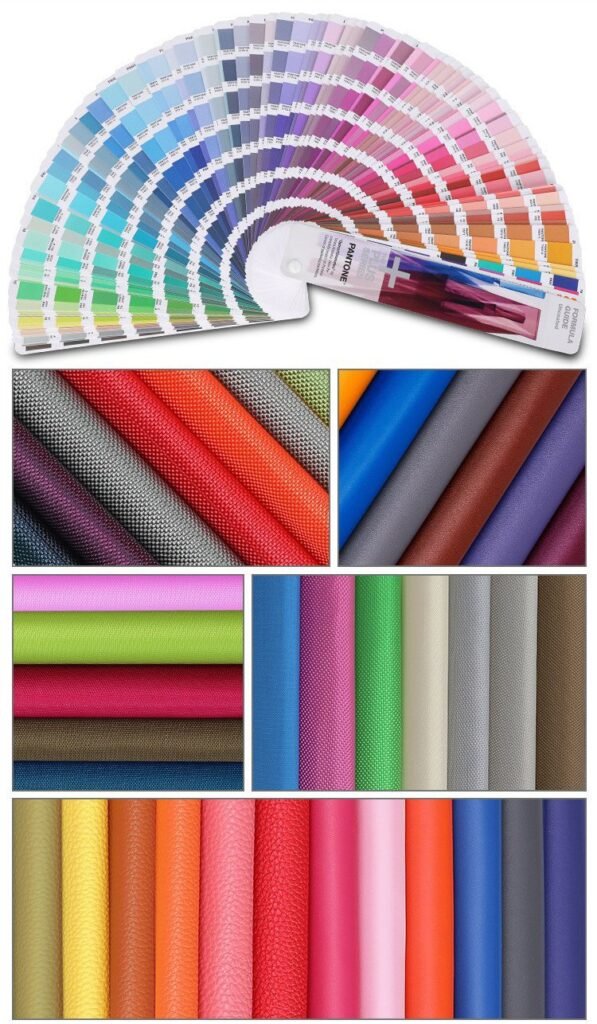
Color Categories:Our fabric color chart is divided into clear categories, making it easy for you to navigate and find your desired hues. Whether you’re searching for bold colors that stand out or subtle tones for a minimalist design, our organized color chart ensures quick selection. These categories cover a full spectrum of options, from bright and eye-catching shades to more muted and elegant tones, perfect for any polyester fabric project.
Color Swatches and Codes:Each category contains multiple swatches that display the available shades within that color family. Next to each swatch, you’ll find the Pantone color code, which ensures consistency and accuracy when placing your order. These Pantone codes serve as an industry standard, guaranteeing that the color you see on our chart is exactly what will be delivered in the fabric. This attention to detail ensures that your products maintain their visual appeal and stay true to your original design.
Custom Color Options:If our extensive standard chart doesn’t perfectly match your needs, we also offer fully customizable fabric colors. Simply provide us with your desired Pantone code or specific color samples, and our team will work with you to develop a fabric color that fits your exact vision. This option is ideal for companies looking for exclusive branding opportunities or designers aiming to create a unique and personal touch.
Digital Rendering Services:To help you visualize how your chosen fabric color will appear on your finished product, we provide digital rendering services. This allows you to preview how the selected color looks in context, whether it’s on a garment, bag, or other textile product. With this tool, you can fine-tune the color choice or make adjustments to other design elements before production begins, ensuring that your custom polyester fabric meets your expectations.
Production Process Of Fabric
At Szoneier factory, the production process of polyester fabric is a blend of advanced technology and meticulous craftsmanship. We begin with the polymerization of raw materials to create polyester fibers, which are then spun into yarn. These yarns undergo weaving or knitting to form the base fabric. To ensure top-tier quality, each stage of production is carefully monitored, from dyeing and finishing to applying special treatments like water resistance or UV protection. Our cutting-edge machinery allows us to produce fabrics in a wide range of textures and finishes, customized to meet the specific needs of your project. With our commitment to precision and excellence, you can count on durable, vibrant, and versatile polyester fabrics ready for any application.
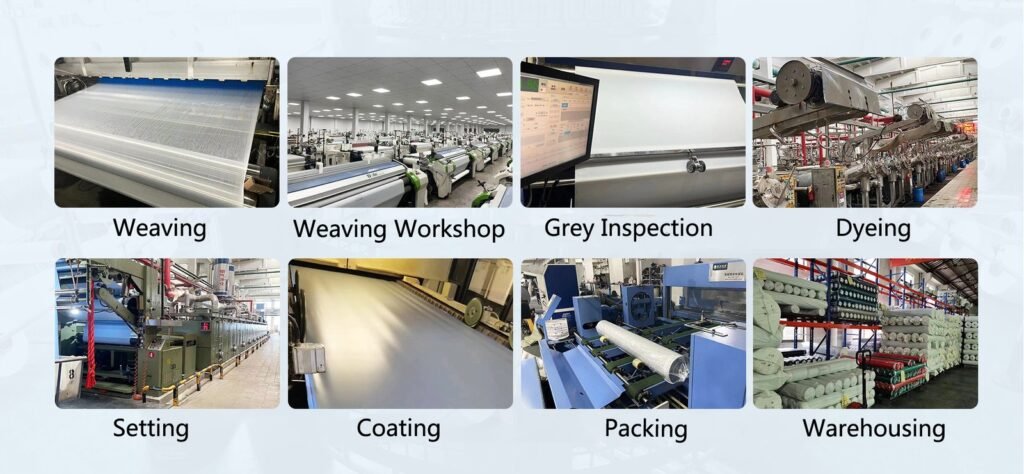
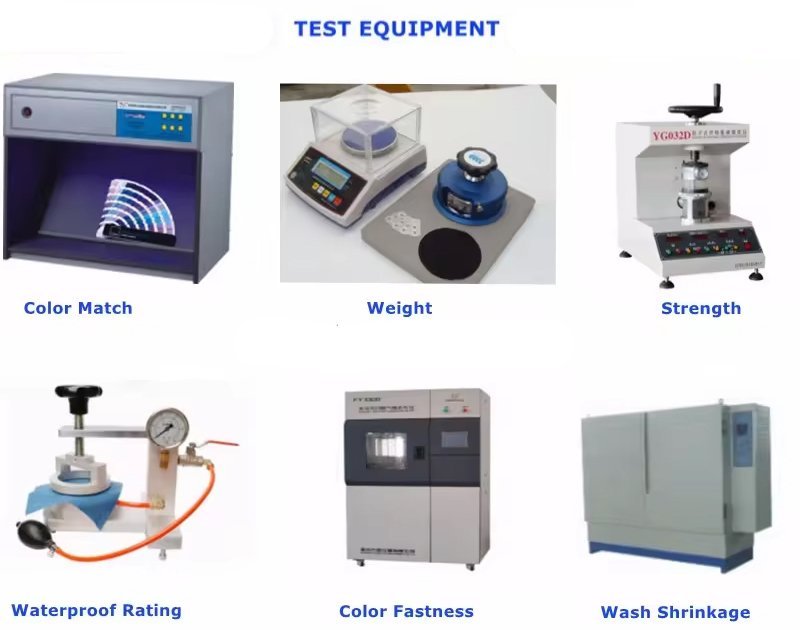
Testing Equipment Of Fabric Production
At Szoneier fabric production factory, we utilize state of the art testing equipment to ensure the highest standards of quality and durability. Our advanced machinery includes tensile strength testers, colorfastness testing equipment, abrasion resistance testers, and moisture control systems. Each piece of fabric undergoes rigorous testing for consistency, performance, and longevity, allowing us to guarantee top-quality products that meet both industry standards and customer expectations. This commitment to quality ensures fabric excellence from production to final delivery.
Make A Sample First?
Got a specific artwork, logo, or design concept in mind? We’re all ears! Share every detail—your preferred fabric type, Pantone colors, and any custom features you want. Our team will partner with you to nail your vision with precision. We’ll start by creating a fabric sample so you can touch, feel, and inspect the quality, texture, and color firsthand before committing to full production. This way, we tweak things until it’s exactly what you imagined. Let’s turn your ideas into a fabric that’s uniquely yours !
Video Of Product And Production
Get a behind the scenes look at our fabric production process with our exclusive factory video. where you can witness the fascinating journey of our polyester fabrics from raw materials to finished products. Our informative videos provide a behind-the-scenes look at the advanced techniques and skilled craftsmanship that define our manufacturing process. Whether you’re interested in the production methods or the innovative designs we offer, these videos reflect our dedication to quality and creativity in fabric development. Join us and explore the artistry of our fabric production!
Cooperating Brands Trusted
Your product is produced in reliable factory like our already cooperating international brand partners below:

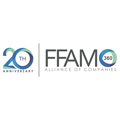

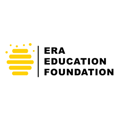

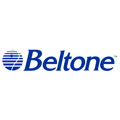


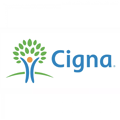


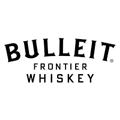
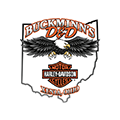



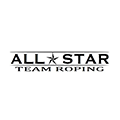

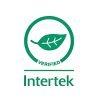
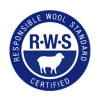
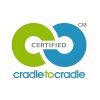
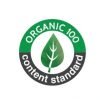
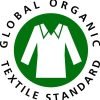
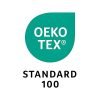

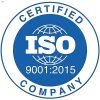
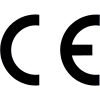
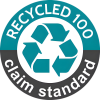
Burlap fabric is primarily made from natural jute fibers, which are derived from the stalks of the jute plant. These fibers are spun into coarse, strong threads and then woven together to create burlap. Jute is one of the most affordable and sustainable natural fibers, making burlap an eco-friendly choice.
The durability of burlap fabric comes from the inherent strength of the jute fibers. These fibers are known for their remarkable tensile strength and resistance to wear and tear. Unlike synthetic materials, burlap maintains its structural integrity even under heavy use. This makes it ideal for applications like heavy-duty packaging, agricultural sacks, and landscaping projects.
Furthermore, burlap’s durability is enhanced by its breathability and moisture-absorbing properties. It can withstand varying weather conditions without degrading quickly, making it perfect for outdoor use. Its coarse texture also contributes to its toughness, allowing it to resist abrasion and friction. As a result, burlap products, from bags to home décor items, can last for years with proper care.
Cleaning burlap fabric requires a gentle approach to preserve its natural fibers. Start by shaking off any loose dirt or debris outdoors. If the fabric has stains, spot clean it with a mixture of mild soap and cold water. Avoid using hot water, as it can cause the fibers to shrink or distort.
To hand wash burlap, soak it in a basin with cold water and a small amount of mild detergent. Gently agitate the fabric without scrubbing too harshly, as this could weaken the fibers. Rinse thoroughly and press out excess water without wringing, as twisting can damage the material. Lay the burlap flat to air dry, preferably in a shaded area to prevent fading from direct sunlight.
For long-term care, avoid machine washing or drying, as these processes can be too harsh for burlap. If the fabric becomes wrinkled, use a cool iron with a pressing cloth to smooth it out. Proper storage is also important—keep burlap in a dry, well-ventilated area to avoid mildew and odors.
Burlap fabric is incredibly versatile and used in a wide range of applications. One of its most common uses is in agriculture and gardening, where it serves as root ball wraps, erosion control blankets, and garden liners. Its breathable nature helps protect plant roots while allowing moisture and air to circulate.
In packaging and logistics, burlap is frequently used for heavy-duty sacks that transport coffee beans, potatoes, grains, and sand. Its durability and breathability keep contents fresh and protected from moisture damage.
Burlap is also popular in home décor, adding a rustic touch to curtains, table runners, and throw pillows. Additionally, it’s widely used in weddings and events for decorations like chair sashes, banners, and centerpieces. Craft enthusiasts love burlap for DIY projects, from wreaths to wall hangings.
Yes, burlap fabric is considered one of the most eco-friendly textiles available. It is made from jute, a natural fiber that grows quickly with minimal agricultural inputs. Jute plants require little to no pesticides or fertilizers, making them highly sustainable. Additionally, they improve soil health and help in carbon sequestration, contributing positively to the environment.
After its useful life, burlap is fully biodegradable, decomposing naturally without leaving harmful residues. This makes it a responsible choice compared to synthetic fabrics that take decades to break down. Repurposing old burlap into compost or garden mulch further enhances its eco-friendliness.
Because of its natural origins and minimal processing, burlap has a relatively low carbon footprint. Choosing burlap products over synthetic alternatives helps reduce environmental impact and promotes sustainable practices.
Yes, burlap can be used for upholstery and furniture projects, but it requires some considerations. While burlap’s rustic texture and natural look are appealing, it may not be as soft or refined as other upholstery fabrics. However, it works well for rustic or farmhouse-style furniture, where its coarse texture enhances the aesthetic.
When using burlap for upholstery, it’s essential to choose high-quality, tightly woven fabric to ensure durability and longevity. It can be used as a decorative layer on cushions, ottomans, or accent chairs. To improve comfort, pair it with softer underlayers or cushions.
It’s also important to protect burlap upholstery from excessive moisture, as it can weaken the fibers over time. Consider using a fabric sealant to minimize dust and make the surface easier to clean. Regular vacuuming and spot cleaning will help maintain its appearance.
In summary, while burlap may not be the go-to fabric for luxury furniture, it’s a fantastic choice for creating a cozy, rustic vibe that’s both practical and stylish.
Frequently Asked Questions
Welcome to our FAQ section on customized nylon fabrics, where we answer your most common questions and provide insights into fabric types, customization options, features, and order-related details. Whether you’re looking to learn more about the various nylon fabric styles, specialized finishes, or the ordering process, we’re here to help. Our goal is to ensure that you have all the information needed to make informed decisions about selecting the perfect nylon fabric for your unique project.

